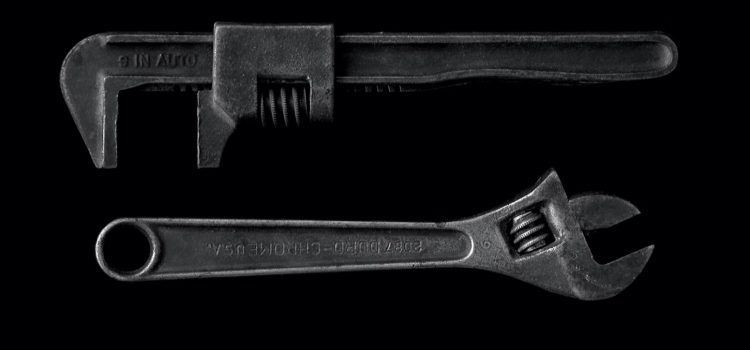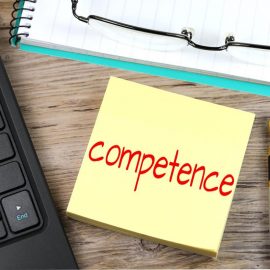
This is a free excerpt from one of Shortform’s Articles. We give you all the important information you need to know about current events and more.
Don't miss out on the whole story. Sign up for a free trial here .
What is the right-to-repair movement? Should the manufacturer be able to dictate whether you can repair something if it breaks?
The right-to-repair movement argues for laws establishing your right to fix your stuff. Proponents of right-to-repair argue that we should encourage people to repair products rather than replace them to protect the environment.
Read on for an overview of how the right-to-repair movement started and predictions for its future.
What Is Right-to-Repair?
To understand the right-to-repair movement, imagine starting your car one day, and the onboard computer tells you it has detected a problem, and you must take the car to an authorized service center within 72 hours. If not serviced within this time frame, it will block you from starting the car thereafter. The nearest authorized service center is a six-hour drive away, and having the car serviced will cost you hundreds of dollars. But the only thing wrong with it was a sensor in the emissions control system that cost the manufacturer less than a dollar.
If you think this scenario sounds like an automaker’s version of extortion, you’re not alone. Since approximately the turn of the century, a diverse contingent of owners, users, and independent repair workers has become involved in the right-to-repair movement, which has been pushing for passage of right-to-repair laws that would limit manufacturers’ ability to monopolize repairs on the products they sell.
The issue of the right-to-repair movement spans a number of industries and products, including cars, consumer electronics, and farm machinery. Farm machinery has drawn particular attention because of the high up-front cost of the machinery, the high cost and long delays involved in obtaining authorized repairs, and the fact that a farmer’s livelihood often depends on getting a crop planted or harvested in a narrow time window (which authorized technicians may not accommodate).
Right-to-repair laws require manufacturers to make any special tools, parts, or information needed to repair or maintain their products available to the public. Proponents of the right-to-repair movement argue that these laws are necessary to protect people’s property ownership rights. In this article we’ll first discuss the nature of ownership and how, according to proponents of right-to-repair laws, common business practices can compromise owners’ rights. Then we’ll look at what they propose and why. We’ll conclude with an overview of right-to-repair legislation to date and the issues that will determine the future of the right-to-repair movement.
The Definition of Ownership
Philosophically, the right-to-repair movement is about the right to own property and the definition of ownership. What does it mean to own something? Mostly it means you can use it however you like, because you alone will bear the consequences. For example, if you want to paint your car with zebra stripes, you can. That might reduce its resale value, but that’s OK because it’s your car, so any reduction in value is only your loss.
Business Practices That Can Undermine Ownership
Some manufacturers of computers, phones, cars, farm machinery, and other products make a practice of trying to limit what you can do with products that you buy from them, especially when it comes to maintenance, repair, and modification. They do this by making the product difficult or impossible to service with commonly available tools and components. This enables them to dictate who repairs or modifies their products and to control the scope of modification or repairs.
For example, suppose you own an older laptop that still meets your needs, but the battery won’t hold a charge anymore. Since it’s your laptop, you should be able to remove the battery and install a different one if you like. But it may not be that simple: Opening the case or accessing the battery may require special tools. The battery may be a proprietary design that’s not available for sale by itself. The battery could even have an ID chip with a unique serial number that the computer is programmed to check during boot up, so that the computer won’t boot up correctly with any other battery.
The Motive for Limiting Repairs
The primary reason companies try to limit repairs to their product is that it increases profits in two ways:
- First, it gives the company a monopoly on service and support, which generates an independent revenue stream, regardless of whether they service their product themselves or give “authorized dealers” special access to parts and tools for a fee.
- Second, it increases sales of new units by enabling the company to practice “planned obsolescence.” This consists of discontinuing support for older models of their product so that people will have to buy new ones.
Some companies also assert that restricting access to tools and information benefits the user because it prevents users from accidentally (or intentionally) modifying products in ways that could circumvent safety, security, or environmental compliance features of the product.
The Case for Right-to-Repair Laws
Given the definition of private ownership, proponents of the right-to-repair movement argue that if you own the product, you should be able to repair it or modify it as you see fit. Companies shouldn’t be allowed to make their products intentionally difficult to service. If they market a product that requires specialized parts or tools to service, they should be required to make those parts and tools available to anyone at a reasonable price.
The Future of Right-to-Repair
The future of the right-to-repair movement and its laws naturally depends on the degree of support they receive from lawmakers and their constituents. And the degree to which people will support them, in turn, depends largely on their perceived effectiveness. If the right to repair was fully codified in law, how many people would actually take advantage of it? How much would it actually reduce production and disposal of products? How much profit would manufacturers lose as a result? How much additional profit would independent repair shops make?
It may not be possible to answer these questions definitively, but there are a few trends that provide some insight.
- First, it appears that exclusive repair services are disproportionately profitable, at least for some manufacturers. For example, while John Deere is mostly known for manufacturing tractors and other agricultural equipment, one source asserts that John Deere’s repair branch is between three and six times as profitable as its product sales branch. This could explain why manufacturers are willing to spend large sums of money lobbying against right-to-repair legislation. It also implies that if the majority of users switched to repairing their own devices or taking them to independent repair shops, many manufacturers would see a significant decline in profits.
- Second, in recent years we’ve seen a resurgence of interest in do-it-yourself repairs, as evidenced by the number and popularity of how-to tutorials, videos, and other repair information posted online. This trend is self-reinforcing: The more information people post publicly, the easier it is for others to find what they need to make their own repairs—or even just find out that it’s possible to repair something they might otherwise have replaced. This gets more people interested in repair demos and information, increasing the demand for repair-related content and completing the cycle.
If the trend toward more interest in do-it-yourself repairs continues, it could increase the support for the right-to-repair movement and legislation, as well as the likelihood that people would actually take advantage of any such legislation when and if it is passed.

Want to fast-track your learning? With Shortform, you’ll gain insights you won't find anywhere else .
Here's what you’ll get when you sign up for Shortform :
- Complicated ideas explained in simple and concise ways
- Smart analysis that connects what you’re reading to other key concepts
- Writing with zero fluff because we know how important your time is






